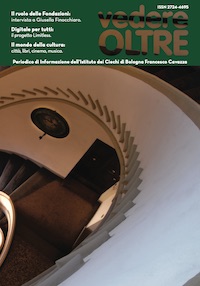1 - CITY
The city is where we talk about accessibility today, and specifically its public spaces. In particular, we are interested in cultural spaces, those where people relate to each other and to their physical and historical context. This is why they need to be accessible for everyone. The projects for Bologna in which we have participated aim to imagine a city that is not only accessible but inclusive in its many parts, in the continuity of the city's experience. An experience that must allow anyone to be autonomous in their activities and to develop skills within the relational dimension.
2 - MUSEUMS
A first series of projects focused on museum accessibility and involved both museums of the Institute for the Blind Francesco Cavazza. The Anteros Museum for the integrative aspects of accessibility of some of the works and the Tolomeo Museum for the design of tactile maps of orientation and mobility and monuments and inclusive aspects towards the museum experience. At our side the CDH (Centro Documentazione Handicap) for motor and cognitive disabilities and the Gualandi Foundation for hearing disabilities. The paths are based on the selection of significant works in terms of iconographic theme, historical content and aesthetic value, to be explored in the original. The initial phase of the project involved a series of site visits to assess the state of accessibility of the museum and the selection of works. The first approach to the museum is spatial in nature, understanding the nature of the building, its size, its style, and understanding its spaces: how to find your way around, where to find accessible rooms and how to get to services. For this reason, orientation and mobility maps and monument maps were created. This is combined with the need to provide accessible room communication and follow-up training for museum staff. Captions with concise text, shown in black, large print, and in Braille.
.jpg)
3 - U-Area for all - Rock project
A second set of projects relates to a path launched in spring 2019 with the Fondazione Innovazione Urbana and the University of Bologna to design and test an inclusive guided tour service in the university area. A project that provides the city with commentary description which has joined the Tolomeo Museum with CDH, the Gualandi Foundation, La Girobussola onlus and MUVet. The announcement that supports the project was initiated as part of the Rock Project involving the university area of Via Zamboni.
.jpg)
The goal is the revitalization through environmental, social, economic and sustainable processes to transform it into a sustainable, cultural and creative district. An initial mapping process was followed by restitution in the form of a paper guide accessible with maps in raised lines. It presents the three approaches to the visit by people with visual, hearing and motor disabilities but also to allow anyone to experience the city with a different perspective. The moving map was accompanied by three static tactile maps installed in Piazza della Mercanzia.
.jpg)
The first map is about urban form, the map developing from the junction of the Cardo and Decumanus streets and the medieval radial street layout. The second shows the porticoes in their typological differences and the third examines the theme of the towers starting with those of Porta Ravegnana. In conclusion, the work on the city was developed with multiple dimensions: buildings and museum institutions, on place and sites, in the city in motion and in the static form of tactile maps.





.png)